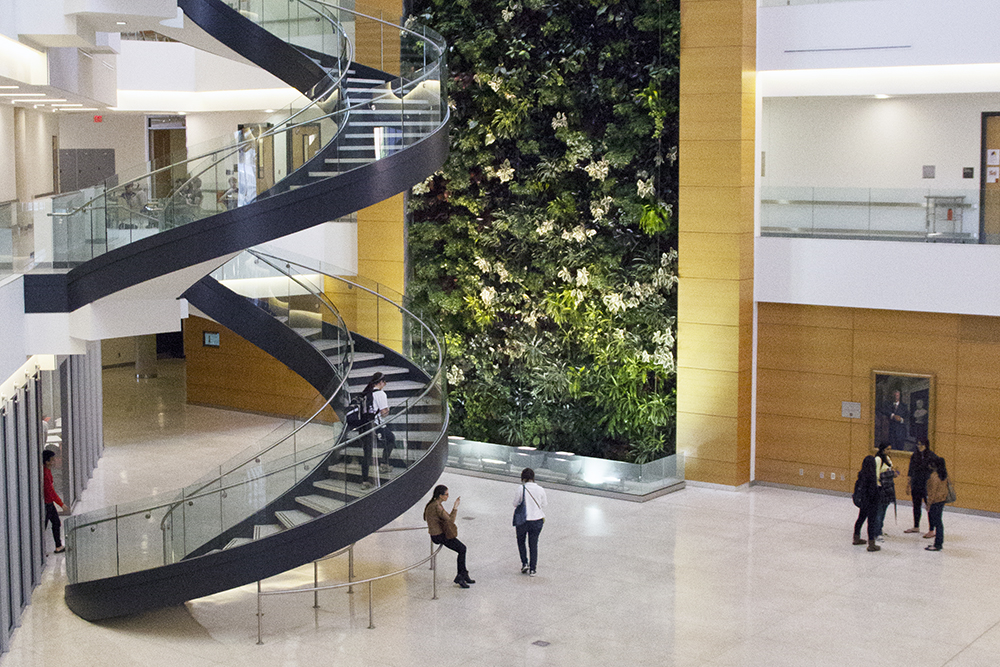
Drexel students who have been around campus during the past few terms may have noticed one of the university icons missing: the Biowall at Papadakis Integrated Science Building.
There was no official announcement about the renovations of the Biowall. Students who entered PISB for research or classes — some after spending a long time off-campus — simply noticed the Biowall’s plants were gone. The Triangle recently found out what happened to this unique university feature.
Sometime in 2019, water damage was noticed in the lecture hall behind the Biowall. Drexel Facilities determined that water began filtering behind the original waterproofing, according to an email from Scott Durham, Director of Grounds of the University’s Real Estate and Facilities Department.
The Biowall is a campus icon that many prospective students visit on their campus tours. Science students from the College of Arts and Sciences take pride in it being North America’s largest living biowall — 22 feet wide and 80 feet tall — and the only wall of its kind in a U.S. university at the time of its opening in 2011.

“Because this was a hydroponic wall that required continuous water flow to sustain the plants, the plants began to die off very quickly once the water was turned off to investigate the extent of the damage,” Durham‘s email said. “Ultimately the wall was taken offline and before the plants were removed and discarded, faculty & staff in PISB were notified and invited to take some home but I am unsure how many were actually taken.”
After months of investigation and research on the issue and its solution, the renovation process began, said Nancy Trainer, Associate Vice President and University Architect at the Real Estate and Facilities Department, in an interview.
“The Biowall served really well during 10 years,” Trainer said. “It was a fairly early example of a biowall on the university setting and the technology has changed a lot since then.”
According to Trainer, once the old base of the Biowall is removed, the renovation process will take three phases: the construction of the new structure, the installation of a new system of lighting for the plants and, the attachment of the new plants.
Unlike the original Biowall system, which was watered constantly, the updated system will need less water. The plants will be set in sections, and only the sections that need it will get water at a time, the University architect said.

“This sectional division will also facilitate maintenance in the future because if only a part needs to be repaired or changed, we wouldn’t need to repair the entire wall,” Trainer said. “Also, this new system has a growing medium, similar to soil, which is the system more modern Biowalls are using. … So, it’s an update after 10 years, and it will help with the maintenance of the Biowall and extend its life”
The majority of the renovation work is expected to be done by mid-September, Trainer said. After that, the installation of the lights will begin as soon as the production company has them ready.
“We’re glad the Biowall means something to students and that [they] care enough to ask what’s going on,” Trainer concluded. “ … We were just taking care of it and making it last longer.”

